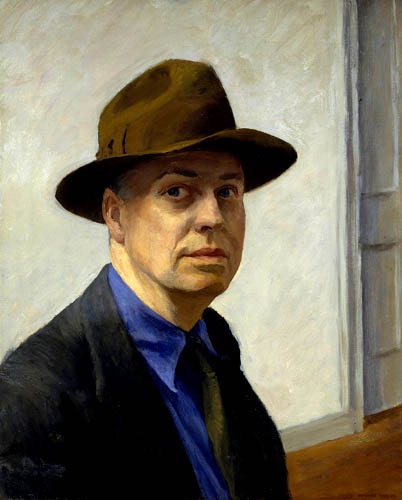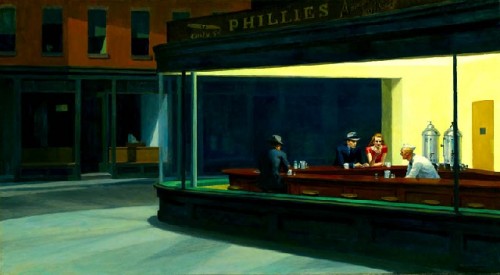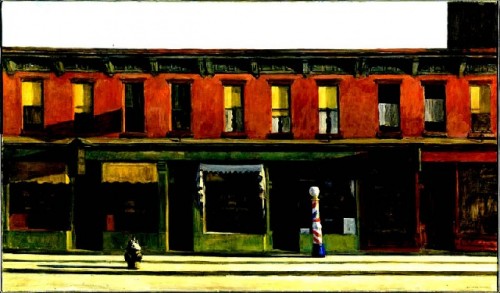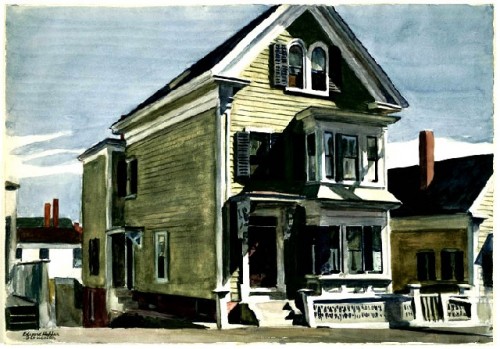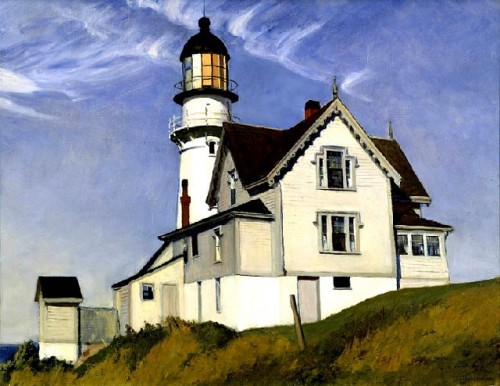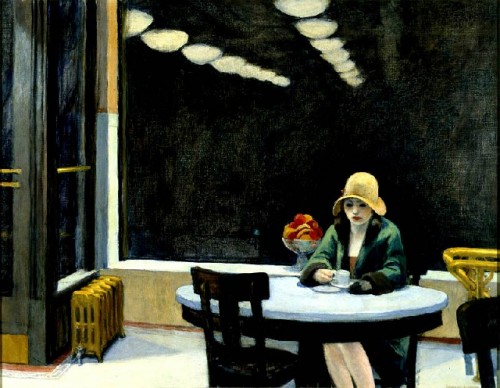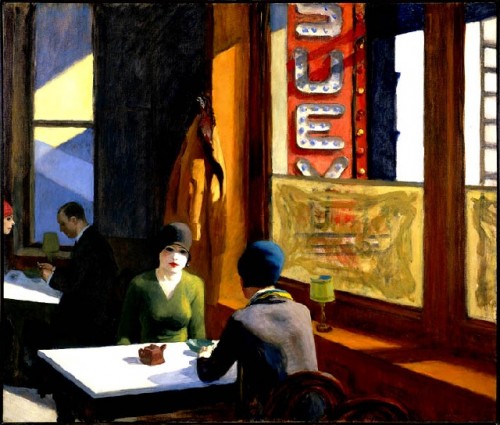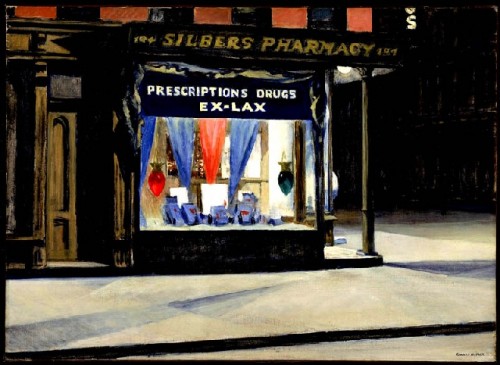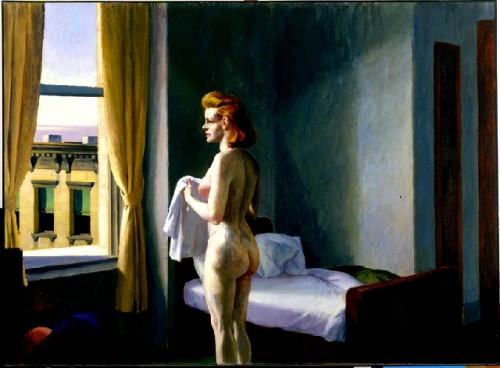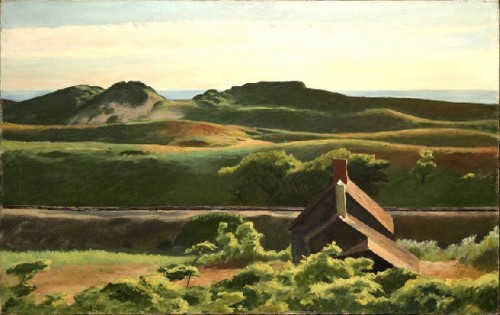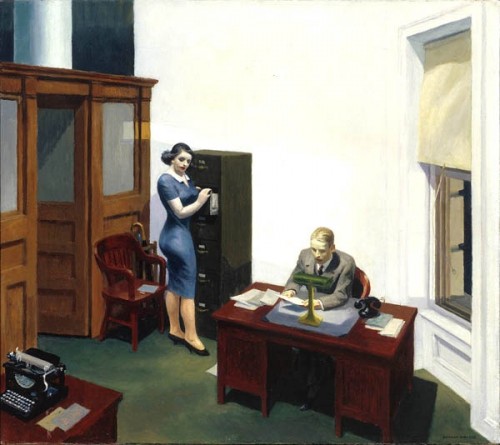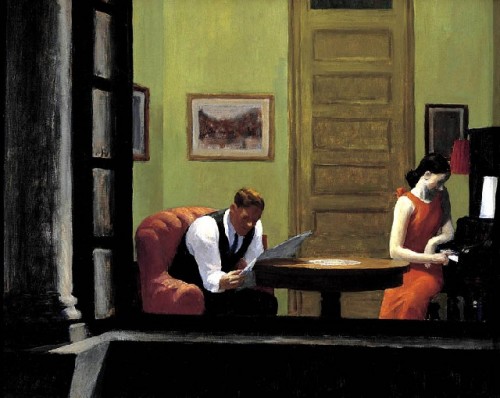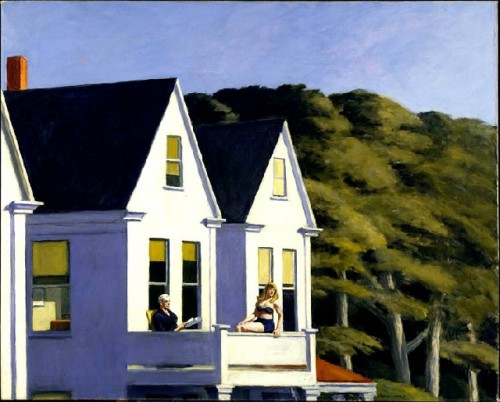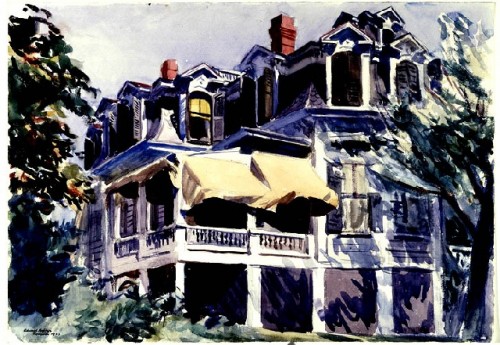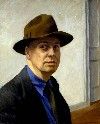Touring Edward Hopper Exhibition Opens at Boston's Museum of Fine Arts
How did his deadpan realism capture an American spirit?
By: Charles Giuliano - May 10, 2007
"Edward Hopper"
Co curated by Carol Troyen, Franklin Kelly and Judith A. Barter. Museum of Fine Arts, Boston, May 6 through August 19. The National Gallery of Art, Washington, DC, September 16 through January 21, 2008. The Art Institute of Chicago, February 16 through May 11, 2008. Catalogue with essays by Troyen, Kelly and Barter, Elliot Bostwick Davis, Janet L. Comey and Ellen E. Roberts. 264 pages, Published by the Museum of Fine Arts, Boston.
No American artist was ever more poignant or reticent in capturing the mood of America during the first half of the 20th century. Although Edward Hopper (1882-1967) traveled to Europe three times, 1906-07, 1909, and finally in 1910 he returned unscathed by Cubism and the avant-garde which he must surely have encountered or at least been aware of. The work he is most celebrated for represents a kind of reactionary, literary, narrative, illustrative tradition best represented by the Ashcan painters who prevailed during his formative years.
Although he held modernism at arms length, and unlike other realists of his era reveals little or no interest in politics, no artist of his time has left a more indelible impression on the American psyche. Indeed he was so singularly apart from the mainstream of American issues and the international turmoil of wars, socialism, the Great Depression and genocide that he may stand for a kind of utopian America, a poetry of the city and its people, the isolation of its coastal landscape, the ennui of average Joes and working girls, that the world he represented may never have existed other than in his stark imagination. There is no such America and never has been which is precisely why there is such romance and longing in embracing his pictures.
Is there a single more American picture than the great "Nighthawks" from the Art Institute of Chicago? Who has not waxed rhapsodic over its 'film noir' essence. The late night depiction of a couple grabbing a burger and cup of joe in a diner encased with massive plate glass seems to come with a dialogue attached. In our subconscious we stare at the image and plug in a sound track from a favorite movie of the period. This is typical of Hopper but is a paradigm of his genius. It touches on the essence of the period but is not a rendering of any particular film. Aspects of his work convey a cinematic quality; and how Americans love the movies. It is a topic that everyone relates to. This is precisely what is so attractive about the "Movie Stills" of the contemporary realist, Damian Loeb. The term Hopperesque aptly describes Loeb's work.
What is so compelling and iconic about the empty main street of "Early Sunday Morning" from the Whitney Museum? I recall driving through small New England towns that looked just like that during my youth in the early 1950s. That emptiness and absence of cars, parking meters, or foot traffic or the colorful, striped, barber pole advertising where a haircut cost fifty cents. Perhaps Hopper knew the unpopulated, Sunday morning, urban views photographed by the Parisian Atget. It is just such empty urban views conveyed by the super realist paintings of Richard Estes.
Although there are women and nudes in his work they are strangely lacking in erotic appeal. Often they are young and beautiful but trapped in mundane jobs or languishing alone at home by the windows of low rent apartments. Perhaps sitting alone or with a friend enjoying a cheap meal at a Chinese restaurant or the Automat. There is a pretty blonde woman in "New York Movie" (1939) from the Museum of Modern Art. She is every bit as beautiful as the glamorous women of the silver screen, but we see her off to the side of the movie palace. She is not the stuff of dreams but rather a pretty girl getting minimum wage during the Great Depression leaning against a wall seemingly lost in thought. Where another artist, such as Reginald Marsh, might milk this subject, the genius of Hopper was to render it in an understated manner. Again, he allows us to fill in the details using our imagination.
This is not a great or definitive Hopper show. It represents just a glimpse of the range of the work although it has several of the greatest paintings. Josephine, the widow of Hopper, left 3,000 works to the Whitney Museum of American Art. In recent decades there have been a number of Whitney exhibitions focused on aspects of the career and there is always a good representation of paintings and related drawings in the permanent collection. Oddly enough the Museum of Fine Arts owns a good but not great Hopper "Drug Store" 1927 but there appears to be depth in its prints and watercolors. Although the MFA has a great collection of American art, particularly after it was strengthened by the Lane Collection, the museum lost interest in all aspects of modernism, including American art, by the 1920s and didn't return with any interest (other than prints, drawings and to a lesser extent, photography) until it created a department of 20th century art in 1971.
The good news is that the MFA is not mounting yet another survey of French Impressionism. They are giving Monet a rest. Although you may get your fix at the Clark Art Institute this summer in Williamstown. And thankfully the MFA has spared us the absurdities of Gainsborough, Herb Ritts, Karsh, Guitars, Cars, Fashion or even David Hockney. For once the MFA is displaying work that appeals to virtually everyone from experts and art historians to the general public. While it doesn't reveal anything new that we haven't learned in those Whitney shows it is surely a step in the right direction. Having Hopper in town is a nice way to spend the summer.

